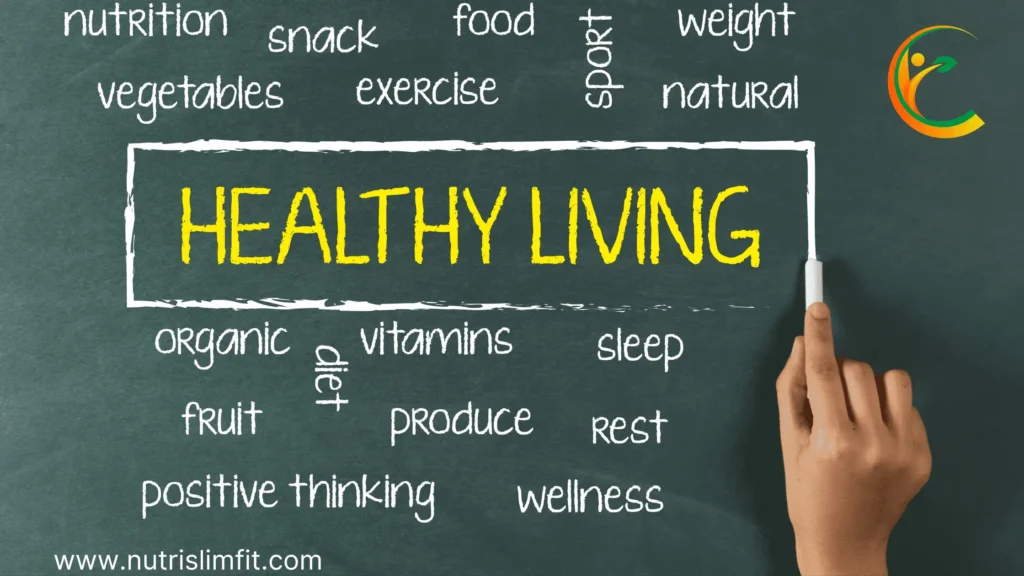Table of Contents:
- Introduction
- What is a Balanced Diet?
- Health Benefits of eating a well Balanced Diet
- Provides Essential Nutrients
- Maintains Healthy Weight
- Boosts Energy Levels
- Enhances Mood
- Lowers Risk of Chronic Diseases
- Components of a Balanced Diet
- Vegetables
- Fruits
- Whole Grains
- Protein
- Healthy Fats
- Dairy
- Water
- Creating a Balanced Meal Plan
- Focus on Nutrient Density
- Various Foods and Flavors
- Control Portions
- Snack Healthy
- Stay Hydrated
- Overcoming Obstacles to Eating Balanced
- Meal Planning Tips
- Strategies for Eating Out
- Changing Habits Gradually
- Conclusion
Introduction:
A Balanced Diet is essential for maintaining overall health and well-being. However, what exactly is a Balanced Diet for Overall Wellness, and why is it crucial for general health? The definition of a balanced diet, its primary advantages, the major food groups that comprise balanced nutrition, advice for putting together a nutritious menu, and methods for overcoming barriers to eating a balanced diet will all be covered in this article.
A Balanced Diet: What Is It? And The Importance of a Balanced Diet for Overall Wellness

Your body receives the ideal concentrations of all the vital nutrients it requires to operate correctly from a balanced diet. Water, vitamins, minerals, protein, fat, and carbs are all included in this. Eating a varied combination of foods in the appropriate amounts from each food group will help you reach your calorie requirements.
The main food groups in a healthy diet are vegetables, fruits, grains, and oils/healthy fats. Vegetables should make up at least one-half of your plate.
- Fruits: Concentrate on whole fruits.
- Grains: At least half of your plate should be whole grains.
- Protein: Change up your protein sources.
- Dairy: Low-fat or non-fat dairy.
- Oils/Healthy fats: In moderation.
- Color: A balanced plate should be colorful, flavorful, and varied to provide a wide variety of nutrients. Portion Size: For a balanced diet, it’s important to ensure that you’re not eating too much of one food group or too much of another.
Health Benefits of eating a Well-Balanced Diet for Overall Wellness
Regular consumption of a balanced diet has several positive effects on health:
- Provides Essential Nutrients: The various macro and micronutrients that are essential for everything from immune system function to energy production are found in each food group. All these nutrients are available in appropriate amounts in a balanced diet.
- Maintains Healthy Weight: It’s simpler to keep a healthy weight when you eat a balanced diet. A proper nutrient mix helps you feel satisfied for longer, allowing you to consume the right amount of calories.
- Boosts Energy Levels: Healthy fats maintain energy levels, while carbohydrates provide you with energy. Protein also keeps you going. By eating a balanced diet, you can obtain the appropriate fuel sources.
- Enhances Mood: B vitamins, omega-3 fatty acids, and amino acids for neurotransmitters are all provided by a balanced diet, which also helps to lower stress and promote happiness.
- Lowers Risk of Chronic Diseases: By controlling inflammation and promoting optimal bodily functions, a balanced diet helps reduce the risk of heart disease, diabetes, cancer, and other illnesses.
Components of a Balanced Diet for Overall Wellness
You must regularly eat nutrient-dense foods from each of the major food groups to achieve balanced nutrition. A closer examination of these food groups’ functions is provided below:
- Vegetables: Vegetables are a great source of fibre, vitamins, and minerals that are essential for good health. Try to fill at least half of your plate with vegetables. For diversity, get a rainbow of colours.
- Fruits: Packed with nutrients that support health, fruits include vitamins, fibre, antioxidants, and phytochemicals. To achieve better satiety, prioritise whole fruits over juice.
- Whole Grains: For B vitamins, fibre, and complex carbohydrates, opt for whole grain bread, cereal, pasta, and brown rice. Grain refinement removes nutrients.
- Protein: To get different amino acid compositions, try beans, nuts, eggs, seafood, poultry, and lean meat. Choose plant-based proteins more frequently.
- Nuts, seeds, avocado, fish, and olive oil are good sources of unsaturated fats. Minimise saturated fats from dairy and meat, and stay away from trans fats.
- Dairy: Low-fat milk, cheese, and yoghurt offer protein, calcium, and vitamin D. Alternately, go for fortified or lactose-free plant-based dairy products.
- Water: Maintaining adequate hydration is crucial to general health. Water needs vary, so don’t stick to a prescribed amount; instead, follow your thirst.
Creating a Balanced Meal Plan- How to eat Healthy Food everyday
You can set up a nutrition and balance meal plan that meets your nutritional needs by following the following easy strategies:

- Focus on nutrient density: Select foods that have a lot of nutrients compared to the calories they are rich in, such as non starchy vegetables, fruits, beans, nuts, whole grains, shellfish and fish.
- Varying foods and flavours: To ensure that you are getting different nutrients as well as flavourings, mix vegetables, fruits, proteins and grains into your diet during the course of a week.
- Control Portions: Use proper serving sizes for grains (1⁄2 cup), protein (3-4 oz) and dairy (1 cup milk/yogurt) to prevent overeating. Get vegetables and fruit on half of your plate.
- Healthy snacking: Consuming scheduled food helps to control hunger in between meals. Choose nuts, yogurts, fruits and vegetables for nutritional pack options.
- Stay Hydrated: Sip water instead of high-calorie beverages. Add fruits or herbs to the water for flavour.
Overcoming Obstacles to Eating Balanced-Tips for Improving Your Health
Eating a balanced diet requires preparation and dedication. The following are some methods to get past typical roadblocks:
Tips for meal planning:
- Prepare meals for grab-and-go each week.go to lunches and breakfasts
- Make extra food to store in the refrigerator.
- If you run out of time, stock up on nutritious frozen meals.
- Set aside one evening each week to shop for groceries and plan meals.
Strategies for Eating Out:
- Look over the menu online and make a decision before you go.
- Inquire about ways to make dishes healthier.
- Select from baking, grilling, broiling, or steaming cooking techniques.
- Get toppings, sauces, and dressings separately.
- If your meal comes in large portions, divide it or package half of it.
Changing Habits Gradually:
- Prioritize incorporating nutritious foods before eliminating less nutritious ones.
- Give yourself small indulgences every now and then.
- Every week, set modest, doable objectives, like attempting a new vegetable.
- Cut back on unhealthy ingredients in recipes instead of getting rid of your favourite foods.
- Before meals, sip water to help you avoid overindulging.
Conclusion:
For general well-being, a diet rich in whole foods that are nutrient-dense in the proper amounts must be balanced. It offers the best nutrition possible to protect health and lower the risk of illness. It is possible to overcome challenges and adopt a balanced eating approach with some effort put into meal planning, portion control, and gradually changing habits. A balanced diet will benefit your weight loss, immunity, energy levels, and general sense of well-being.


